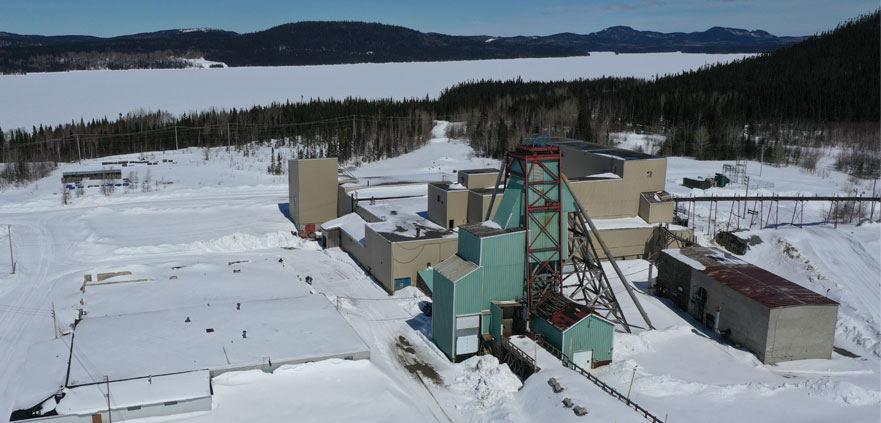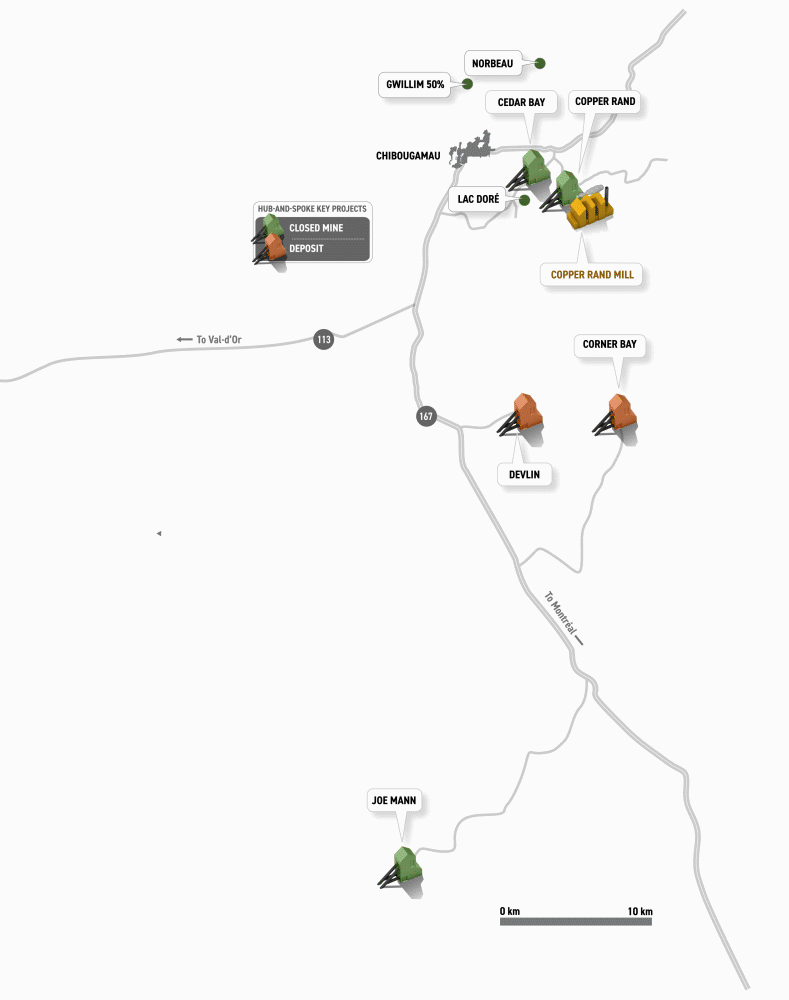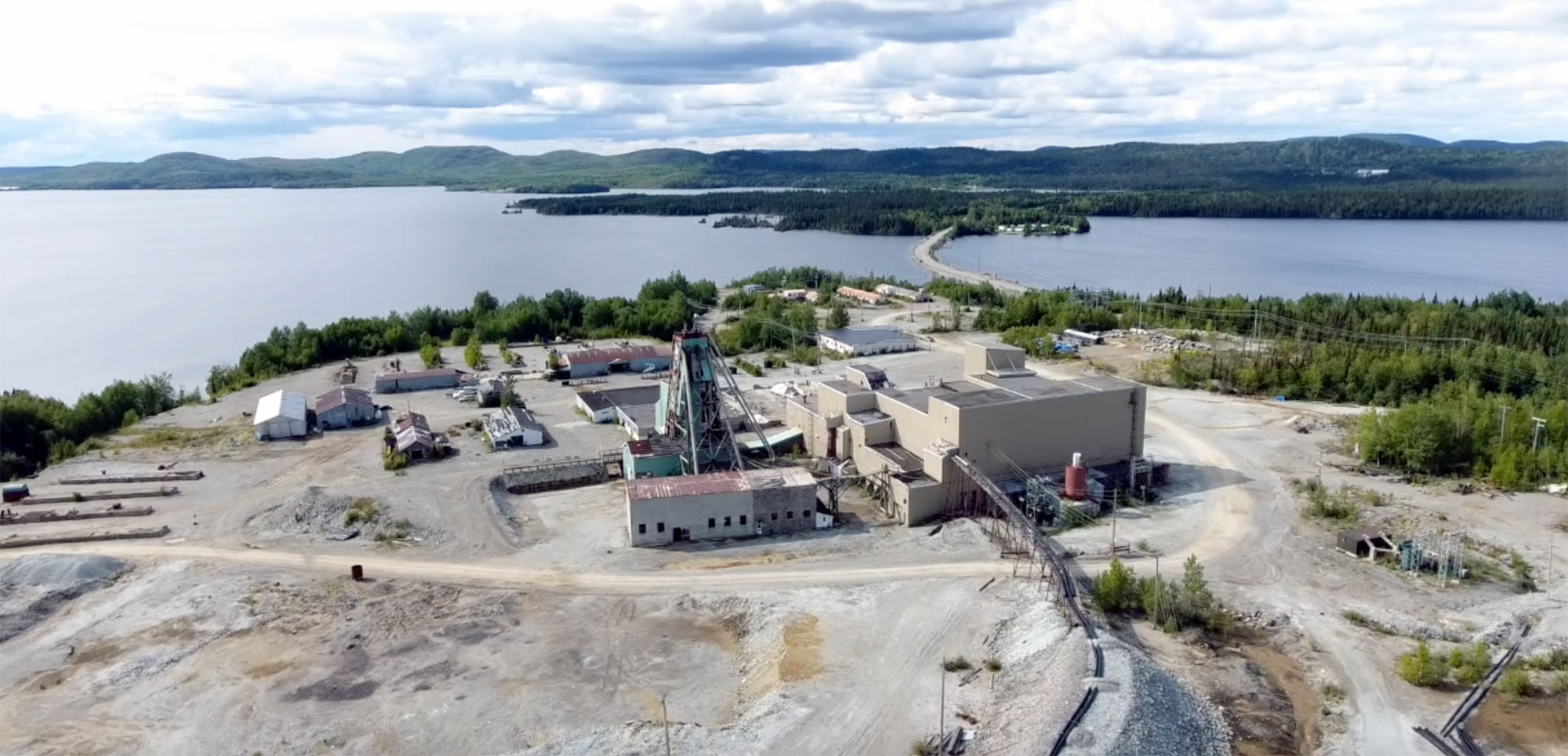PEA STUDY APPROACH
The PEA envisions a hub-and-spoke model operation starting first with the underground development of the Devlin deposit via a ramp and secondly with the underground development of the Corner Bay deposit (main asset) via a ramp. Once the Devlin deposit is mined out (approximately 4 years), production at the Joe Mann mine would start and be funded out of cash flow from operations. Joe Mann benefits from an existing headframe and shaft, including all surface infrastructures.
A fixed crushing circuit and ore sorter plant (XRT) would be installed at Corner Bay and would reject the low-grade and dilution material from the Devlin and Corner Bay mines. The high-grade material would be transported by trucks to the refurbished and optimized Copper Rand mill. The filtered tailings would be transported to a dry stack tailings facility, which uses part of the footprint at the existing TMF.
The copper and gold concentrate produced would be transported to the port of Québec City for onward shipping to international smelters, or to a local smelter. Ocean Partners Ltd. has the off-take agreement (treatment and refining charges terms are within standard market rates).
Opportunities
- Add Corner Bay’s silver and molybdenum content (currently excluded for mineral resources)
- Potential to extend mine life by expanding mineral resources at both Corner Bay and Joe Mann once operation starts
- Surplus grinding capacity at the Copper Rand mill
- Underpins potential for low-cost organic production growth (other nearby assets, including Cedar Bay and Copper Rand) to be evaluated during LOM)
- Potential to increase Corner Bay and Devlin concentrate grades which would decrease treatment charges and shipping costs
- Potential labour cost savings by self-performance for various mill rehabilitation activities
- Potential to install a 25 kV line from the Québec grid to Corner Bay (PEA design has a 34 kV line)
- Potential for a carbon neutral operation with PEA design to utilize power from the Québec grid, minimizing trucked material with ore sorting technology and implementing trolley-assist hauling technology at the Corner Bay mine site. In the feasibility study, the Corporation will attempt to be carbon neutral by the end of Devlin’s mine life (approximately 4 years).
Technical Report and Qualified Persons
The PEA was prepared by BBA Inc. with several consulting firms contributing to sections of the study, including SLR Consulting (Canada) Ltd., SRK Consulting (Canada) Inc., and WSP (Canada) Inc.
>> The technical report is available here.
The Company cautions that the results of the PEA are preliminary in nature and include inferred mineral resources that are considered too speculative geologically to have economic considerations applied to them to be classified as mineral reserves. There is no certainty that the results of the PEA will be realized.



